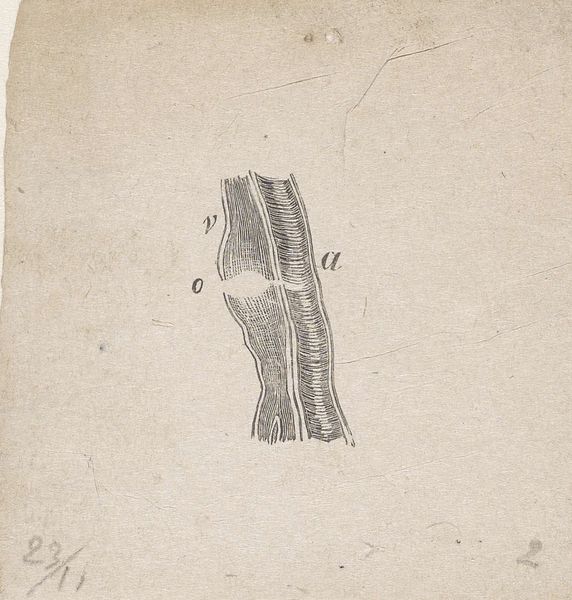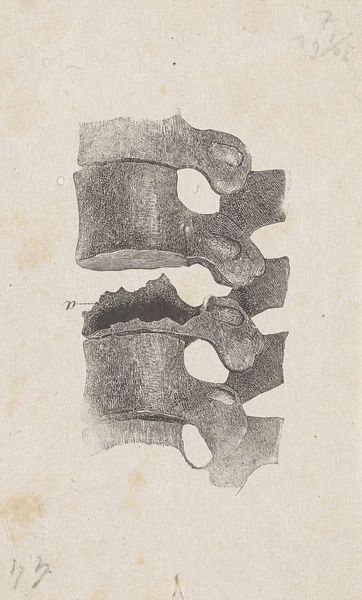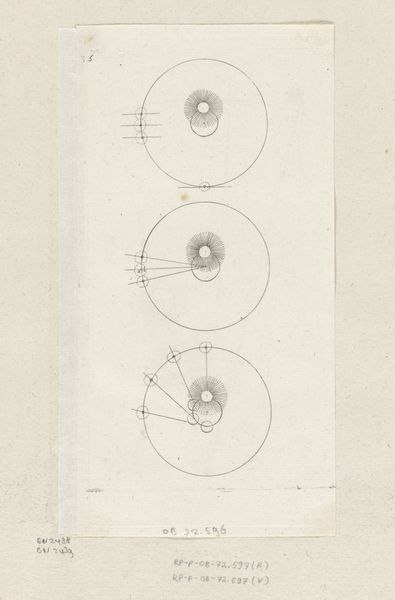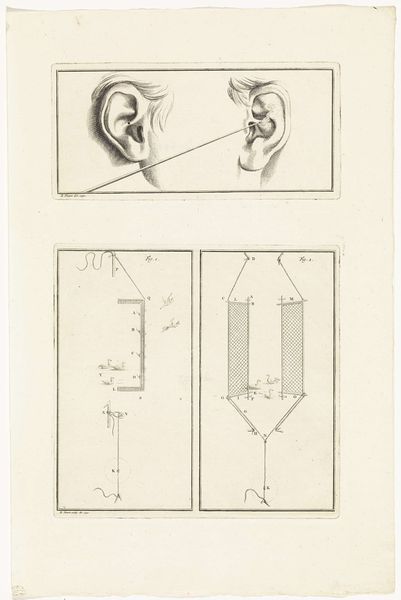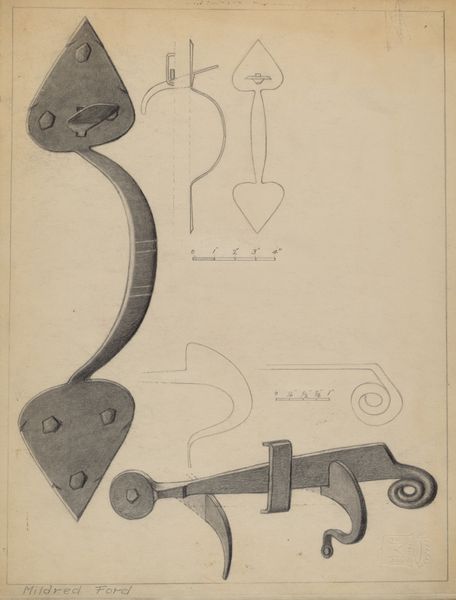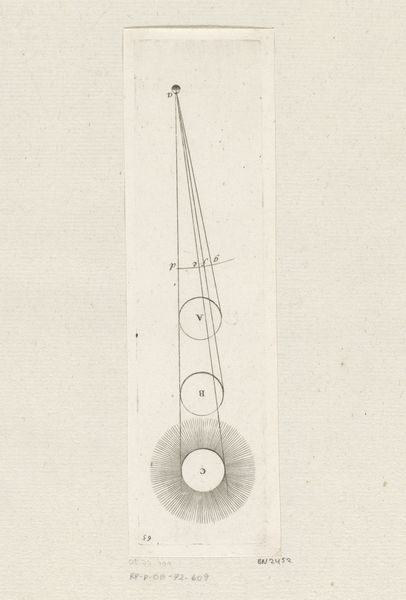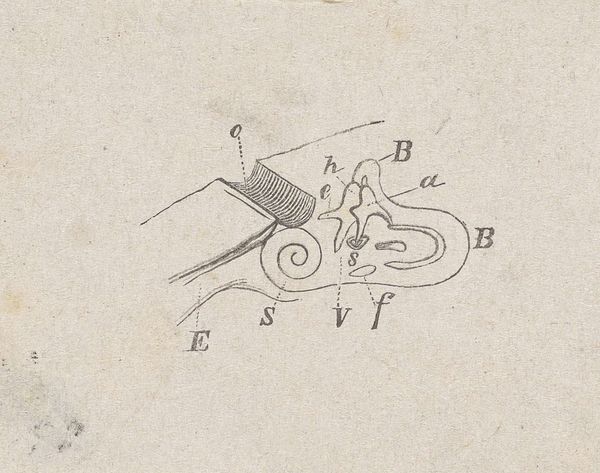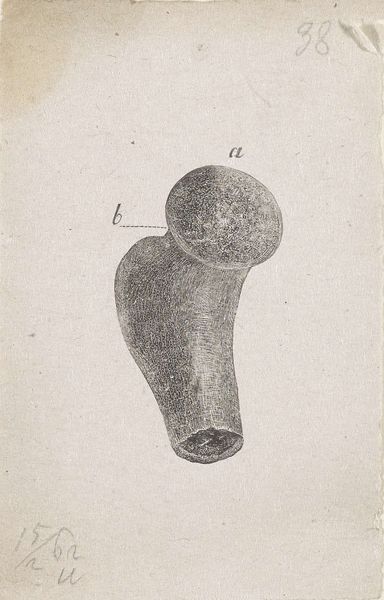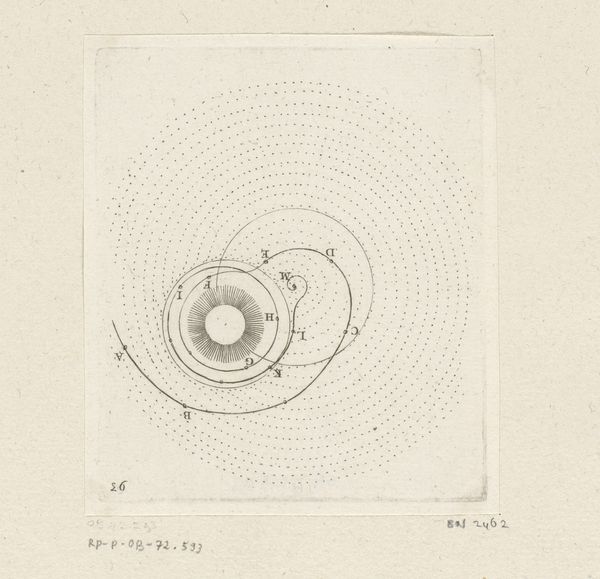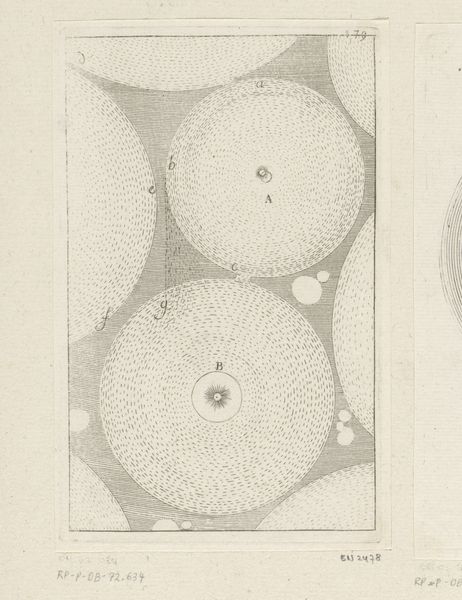
Onderdeel van het menselijk lichaam met een afwijking 1836 - 1912
0:00
0:00
drawing, paper, ink, pen
#
pencil drawn
#
drawing
#
figuration
#
paper
#
ink
#
pencil drawing
#
pen
#
history-painting
#
academic-art
#
realism
Dimensions: height 54 mm, width 73 mm
Copyright: Rijks Museum: Open Domain
Editor: Here we have “Onderdeel van het menselijk lichaam met een afwijking,” which translates to "Part of the human body with an abnormality," a pen and ink drawing on paper, created sometime between 1836 and 1912 by Isaac Weissenbruch. It’s…unsettling. Those organic shapes – are they growths? What do you make of it? Curator: Ah, yes, unsettling is a perfect word. It reminds us that even the most academic, realistic drawings can be deeply personal. Think about the artist's own body; illness, anxieties, fascination with the grotesque... Where do you think his curiosity stems from, drawing these details of a body part and abnormality, so realistically rendered yet isolated on the page? Editor: I suppose I hadn't thought about the artist's perspective. Is it scientific observation, or more of a...contemplation of mortality? Curator: Maybe a bit of both? Academic art valued precision, sure, but artists always brought their own filters, their own emotional landscapes, right? The pen work, almost obsessive in its detail, the isolated forms against the plain background. It is also… strangely intimate. Do you agree? Editor: Absolutely. Now I see it less as a clinical study and more as a very human response to something… vulnerable. Almost like a meditation on what can go wrong. Curator: Exactly! And, really, isn’t that where art finds its power? It invites us to consider the human experience, from the beautiful to the deeply uncomfortable. Art like this teaches us there is a world of possibilities that arise from an honest, albeit discomforting approach. Editor: Well, I'll certainly never look at medical drawings the same way again! Thanks!
Comments
No comments
Be the first to comment and join the conversation on the ultimate creative platform.
